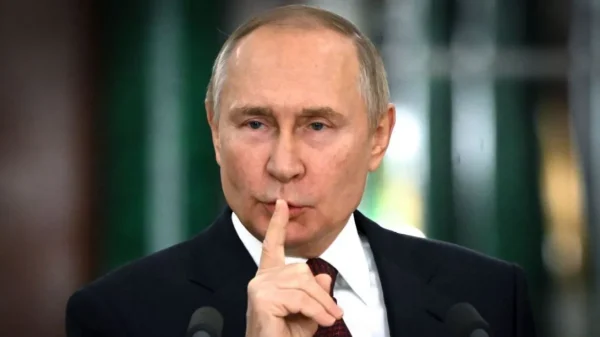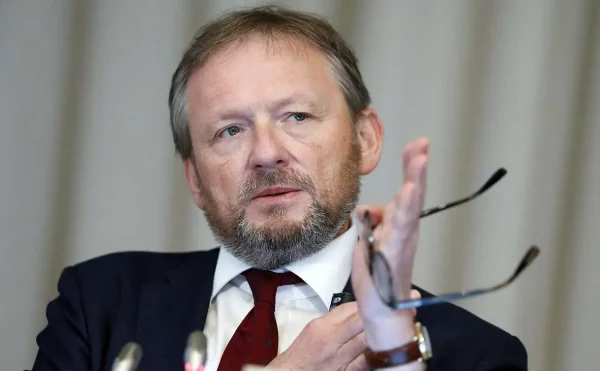Russian Cookbook for Cuba: Preliminary Overview

By Mario Valdes Navia (Joven Cuba)
HAVANA TIMES – Soon after the announcement that a Russian-Cuban center had been created to prepare “economic changes in Cuba based on developing private enterprise,” the main points of its diagnosis of Cuba’s battered economy were also announced. Likewise, the heart of matters proposed to transform and revive it in keeping with the objectives of the parties responsible for leading the process.
The president of the Russia-Cuba Business Council, rightwing liberal millionaire Boris Titov, who is close to Putin, announced that: “Russian economists offered Cuba a change management plan for its market that maintains social support.” Encouraging Micro, small and medium-sized enterprises (MSMEs) is the project’s backbone, because in Cuba: “they are the equivalent of private enterprise, as the State controls every strategic sector.”
If the reform program the Cuban Government/Party/State requested from Russian experts is to develop private enterprise, then something smells bad. We just have to remember that means of production based on small and medium-size mercantile production hasn’t existed in History. It has always played a secondary role to large ownership in times of slavery, feudalism and capitalism. A glance at the world today confirms this.
Aside from Titov’s interview with Sputnik, I haven’t been able to find the report in full, so an analysis still can’t be made in its entirety, but we can comment on its starting points and the conditions in which this transformation could take place in Cuba, which is highly nationalized, bureaucratic and militarized and, as a result: poor, overexploited and lacking key resources. Meanwhile, it’d be useful to debunk myths and underline reality.

Economic starting points
One of the first conditions you need to guarantee capital accumulation is the existence of a skilled workforce to satisfy investment demands. A lot still needs to be done in this regard here in Cuba.
In the occupational structure of Cuba’s aging population, 48% of workers belong to the public services sector (health, education, culture, sports) and the Party/State’s bureaucracy linked to administration. Only the remaining 52% work to produce goods (industry, agriculture, livestock, fishing, construction…) and productive services (tourism, transport, storage, trade, banking…). A great deal of the workforce needs to be channeled from the unproductive to the productive sector.
The Government already implemented a corresponding measure in September 2010, when it announced that over 500,000 public sector jobs would be cut and approximately 250,000 small businesses would be approved within a six month period. It was also expected that another 200,000 private sector jobs would be created through cooperatives and other ways.
Regulations for small business owners were also relaxed at the same time: they could now subcontract labor and rent premises, and they would only have to pay up to 40% of their gross income in tax. While they soon reined in on this pace of change, the brain drain from services to production continued; but rather than ending up in productive work, they ended up in the informal economy and emigrating.
Meanwhile, the GAESA holding company would carry on absorbing the most profitable and promising sectors in the state-owned and mixed economy: the Cubalse Group (2009); ETECSA (2011); the Mariel Special Development Zone (2013). Without reporting back to any public institution, the main blocks of companies’ shares pass through the hands of large private stockholders, many of whom are registered abroad, mainly in Panama.
The supermonopoly’s prioritization of investments in real estate and trade, both abroad and domestic, has driven national sectors that were traditionally more productive – agriculture and agroindustry – into ruin, to the critical situation they are in right now. The participation of medium and high-technology (manufactured) exports of Latin American countries between 2019-2021 doesn’t have any promising results for Cuba: 8%, ranking 31 out of the 34 countries listed.
Ignoring the most powerful countries in the region, almost all of our Central American and Caribbean neighbors are way above Cuba: Costa Rica: 60% (2.); Panama and Trinidad and Tobago: 42% (4. y 5.); Central American average: 37% (8.); Dominican Republic: 33 % The region’s average reaches 59%, seven times more than Cuba’s percentage.
There are similar results with tourism too. In 2022, Cuba welcomed 1.6 million visitors, out of an original target of 2.5 million. Less than 38% than the year before the COVID-19 pandemic. Meanwhile, recovery in the rest of the Caribbean was incredible and exceeded previous levels: The Dominican Republic took in 5 times more: 8.5 million; and the Mexican state of Quintana Roo, 15 times more (over 25 million).
While Titov has highlighted that the Cuban Government needs to eliminate obstacles that hinder MSME development, especially fiscal ones. However, I wonder will MSMEs have the capital and workforce they need to rescue the Cuban economy? If MSMEs continue to be created in dribs and drabs by the Council of Ministers: How many years will it take to build a private sector that can resolve the economic problems that have been piling up in rural areas and cities? Will MSMEs be able to replace large-scale agro-industry production as the country’s main source of revenue, which would be something unprecedented in Cuban history? With all due respect to the Russian advisors, I doubt it.
Social starting points
Social indicators can’t be positive in this economic situation, despite achievements in previous decades. While poverty levels in the mid-80s stood at 6.6% and the inequality index (Gini coefficient) was 0.24, the Cuban Office of Information and Statistics stopped publishing this data ever since 1999, when the Gini coefficient had risen to 0.40 and urban poverty extended to 20% of the population.
In 2018, Jose Rodriguez calculated Gini at 0.45 and inequality has increased ever since then, especially after the Tarea Ordenamiento (Economic Reforms) failed and multiplied differences in distribution and consumption like never before, sinking the working classes into poverty.
As a result, I share the opinion that Cuba’s working class in the state-led sector is a socialist proletariat in a precarious situation, this: “new large social group of people ‘who don’t earn a living wage’ in Cuba.” The widespread uncertainty among working classes has led to the domination of forage ideology. This can be seen in the younger generations, where they abandon revolutionary myths and in their eagerness to leave the country.
With the Government refusing to change its obtuse policies, the Cubans who don’t resign themselves to this fate have decided to change their country of residence. According to Havana Consulting Group, 366,000 cubans emigrated in 2022, which is more than any migration wave since 1965. The majority were young people with a high school education or university degree, and business owners with the capital needed to pay for this expensive journey and invest in their new home.
The other awful face of Cuban poverty is the deterioration of social services and social security, emblems of the new society over decades. When Titov talks about maintaining social support in the privatization process that is being forged, I hope that he’s not thinking about what happened in Russia, which was terrible for the country’s social indicators.
Ever since the USSR’s collapse, investment in public hospitals has been set aside and its infrastructure has been rapidly declining. The ideas Putin’s boys had about the so-called Healthcare Optimization campaign led to the number of hospitals falling from 10,700 to 4390 between 2000 and 2018 – mostly in Moscow and St. Petersburg -, for a population of 146 million. Despite the existence of a private medicine sector, with prices extremely high for your average citizen, it’s estimated that only 20% of the Russian population has access to quality medical services.
Privatize with who?
At a first glance, it might seem like the proposals from Russian think-tanks agree quite a bit with the ones Cuban economists have been putting forward for 30 years, which the Government/Party/State has gone to great lengths to ignore. But that’s not the case: the most important thing isn’t to create thousands of MSMEs, but how they’re created, who is authorized to do this and which mechanisms will be used to allocate financial and material resources that will be distributed to develop this private sector.
Up until now, new Cuban capitalists haven’t come from MSMEs, but from the large backpacks of State capitalism which has flourished after reconverting nationalized public property into public-private partnerships with foreign capital and/or military companies that have been created via anonymous companies registered in other countries via State officials, or their foreign front men. With moves like this appearing to mock restrictions put in place by the US embargo, a crook can raise the pirate pavilion and take Cuban public enterprise as war booty, or as payment for their services.
The most dangerous thing about this large-scale privatization plan via MSMEs is that the much-debated socialist state company isn’t even mentioned anymore. Its collective of workers – that make up the company, more than its buildings, machines and tools – is totally ignored and is only waiting for someone to tell them what their fate will be, just like they did when the sugar industry was dismantled 20 years ago.
Why aren’t worker cooperatives formed to run bankrupt state-led companies? If the company is going to be privatized, don’t workers have the right to a block of shares for all the years they worked there? Will the companies be subjected to an open tender, or will the new owners be chosen in a cooptation process, like in the many MSMEs that were created by former officials, military members and entrusted persons who nobody knew where they got the money from to found a company?
In the reform proposals made by Cuban economists I’ve studied, they always start with transforming state-led companies into self-sufficient modern entities, with greater autonomy and workers’ participation, or into worker cooperatives in sectors such as industry, transport, construction, trade and others that have never been developed.
Why don’t they give worker cooperatives and investment with foreign capital from Cubans abroad a shot, before they continue to privatize with the creation of MSMEs that only serve to launder the ill-gotten money of kleptomaniac bureaucrats? If MSMEs are going to come first and camouflage a large-scale privatization process of the public sector to this new bourgeoisie, they should do this now with open public tenders, not with recipes from foreign advisors who serve Russia and Cuba’s bigwigs.






Rather than copying Putin and placing a finger on the lips. Cubans would be well advised to use two fingers and hold their noses!
Just as nothing changes in Cuba, Russia’s ambitions and purpose do not change!